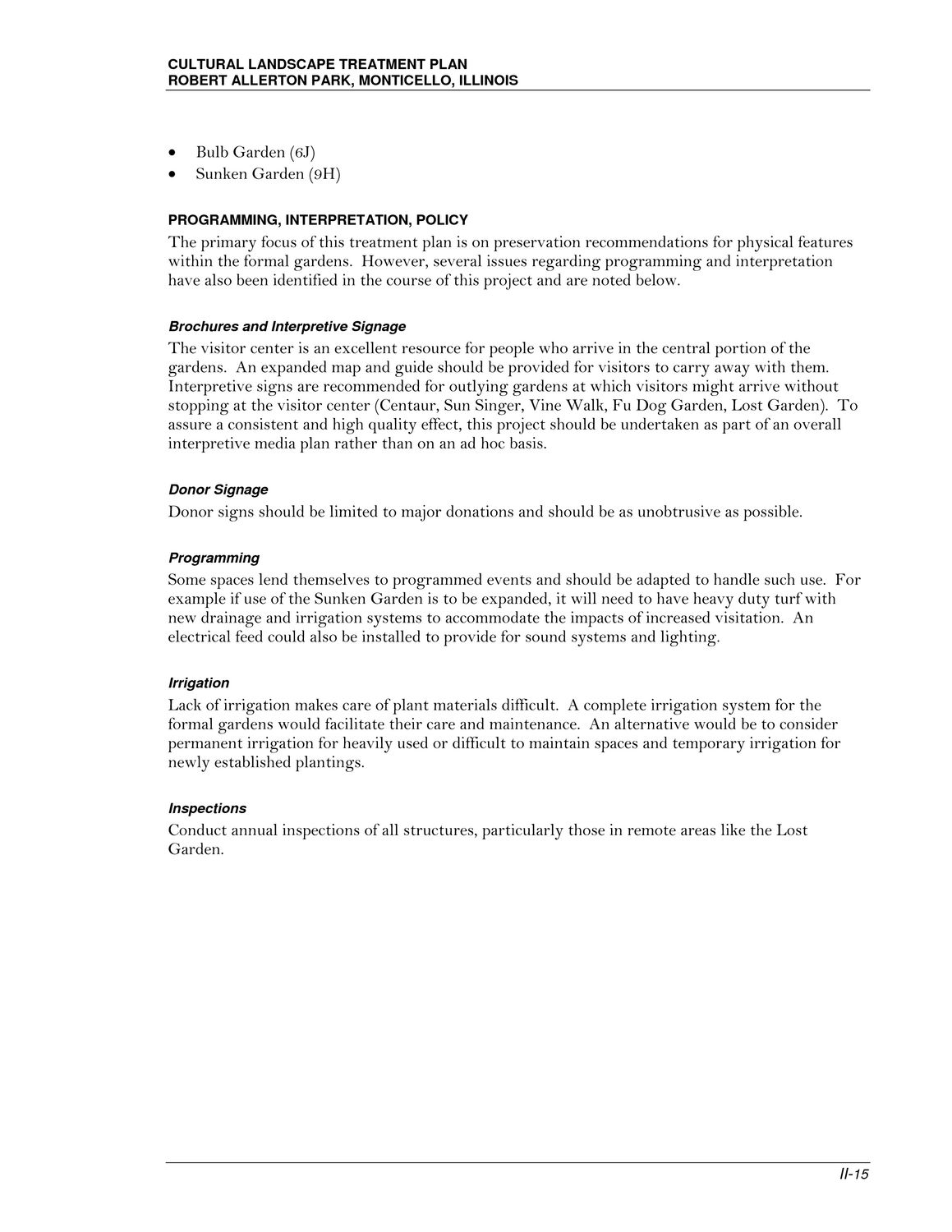Caption: Map of UIUC (2001) (Allerton)
This is a reduced-resolution page image for fast online browsing.

EXTRACTED TEXT FROM PAGE:
CULTURAL LANDSCAPE TREATMENT PLAN ROBERT ALLERTON PARK, MONTICELLO, ILLINOIS • • Bulb Garden (6J) Sunken Garden (9H) PROGRAMMING, INTERPRETATION, POLICY The primary focus of this treatment plan is on preservation recommendations for physical features within the formal gardens. However, several issues regarding programming and interpretation have also been identified in the course of this project and are noted below. Brochures and Interpretive Signage The visitor center is an excellent resource for people who arrive in the central portion of the gardens. An expanded map and guide should be provided for visitors to carry away with them. Interpretive signs are recommended for outlying gardens at which visitors might arrive without stopping at the visitor center (Centaur, Sun Singer, Vine Walk, Fu Dog Garden, Lost Garden). To assure a consistent and high quality effect, this project should be undertaken as part of an overall interpretive media plan rather than on an ad hoc basis. Donor Signage Donor signs should be limited to major donations and should be as unobtrusive as possible. Programming Some spaces lend themselves to programmed events and should be adapted to handle such use. For example if use of the Sunken Garden is to be expanded, it will need to have heavy duty turf with new drainage and irrigation systems to accommodate the impacts of increased visitation. An electrical feed could also be installed to provide for sound systems and lighting. Irrigation Lack of irrigation makes care of plant materials difficult. A complete irrigation system for the formal gardens would facilitate their care and maintenance. An alternative would be to consider permanent irrigation for heavily used or difficult to maintain spaces and temporary irrigation for newly established plantings. Inspections Conduct annual inspections of all structures, particularly those in remote areas like the Lost Garden. II-15
|